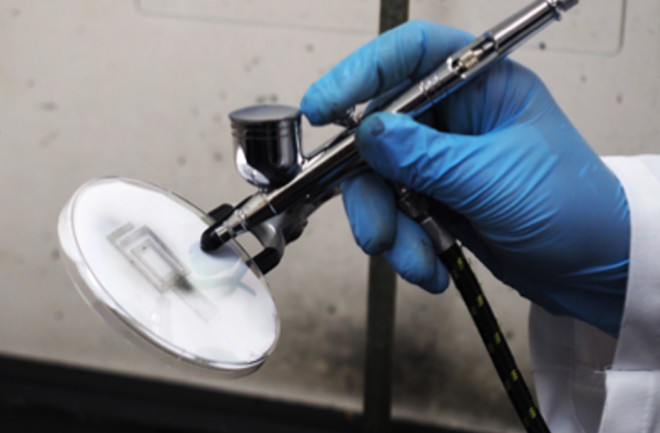A version of this article originally appeared on The Conversation.
Hear the word “antenna” and you might think about rabbit ears on the top of an old TV or the wire that picks up radio signals for a car. But an antenna can be much smaller – even invisible. No matter its shape or size, an antenna is crucial for communication, transmitting and receiving radio signals between devices. As portable electronics become increasingly common, antennas must, too.
Wearable monitors, flexible smart clothes, industrial sensors and medical sensors will be much more effective if their antennas are lightweight and flexible – and possibly even transparent. We and our collaborators have developed a type of material that offers many more options for connecting antennas to devices – including spray-painting them on walls or clothes. Our materials science lab focuses on nanomaterials, which are more than 100,000 times thinner than a human hair. In 2011, researchers in the Drexel University Materials Science and Engineering Department developed a way to combine metals with carbon or nitrogen atoms to create a material that’s a few atoms thick, very strong and good at conducting electricity. We call these materials MXenes (pronounced “maksens”), and we can make them with different metals – including titanium, molybdenum, vanadium and niobium.







